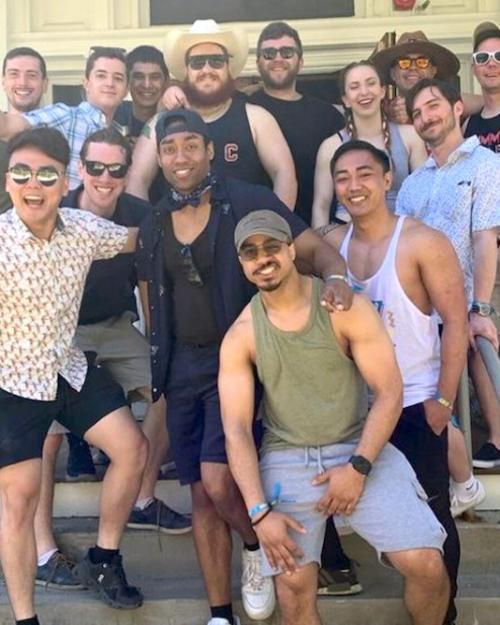As a child, Matthew Garcia ’25 recalls waiting after school at the hospital for his grandmother to finish her nursing shifts. This experience inspired him to follow in her footsteps.
“I knew I wanted to help people, and I saw the medical field as a place where I could do this,” he says.
Matthew’s performance in high school was less than stellar, and at the time, he had few prospects of going to college. He entered the military, hoping to find independence, career training, discipline, and a clearer sense of purpose: “It was finally me—by myself—taking care of myself.”
Five years later, after a tour of duty that took him to the Naval Hospital Guam—where he served as an orthopedic and surgical assistant—he completed his military service and fulfilled all of these ambitions.
“After doing a surgery and seeing somebody walk for the first time after they broke their hip, or seeing a mother holding her baby for the first time after a C-section, it just feels kind of great. It’s like having the satisfaction of knowing what you did had an impact on somebody’s life,” Matthew observes.
Near the end of his military service, Matthew asked his mentor at the Naval hospital, orthopedic surgeon Dr. Daniel Houskamp, how to take the next steps in his medical career.
“I asked my surgeon, ‘Hey, I wanna do what you do. How do I do it?’ And he said, ‘You’ve got to go to college!’”
Cornell was one of the schools on Matthew’s college list, but—doubting the likelihood of getting in to such a prestigious university—he let his application languish. Then he received a phone call from Philip Kay ’23, a student veteran outreach peer counselor at Cornell. Matthew says he didn’t know who was calling and thought it was a sales representative getting back to him about medical equipment for the hospital. Turns out, this call changed the course of his life.
Matthew’s conversation with Phil gave him the confidence he needed to finish and submit his Cornell application.
“He told me, ‘Even though you may feel like you haven’t done a lot, you’ve sacrificed years of your life to serve other people.’ Knowing that there was a veteran community that wanted to support me—and not only support me, but encourage me—that call got me pretty keenly thinking about Cornell.”
He applied and was accepted into the College of Arts and Sciences. Matthew’s tuition is fully covered under the GI Bill and Yellow Ribbon Program, and he was in the first cohort of students to move in to the university’s new Veteran Program House on University Avenue.
The chance to live with fellow veterans and have their support with the transition from military service to academic life was a big plus for Matthew. There are currently 19 residents in the house. Some residents (who call themselves the “Swole Patrol”) make a habit of working out together at 6:00 every morning, and most residents meet up for dinner at 5:00 every evening.
“There is a nice sense of community and camaraderie living here that I’m not sure I would have had if I didn’t associate with the house,” he says. “There’s an impostor syndrome for some of us, in terms of believing in our own academic capability. So, it helps being surrounded by other veterans who are also motivated, that you can study with or take courses with."
Read the full story on alumni.cornell.edu.





